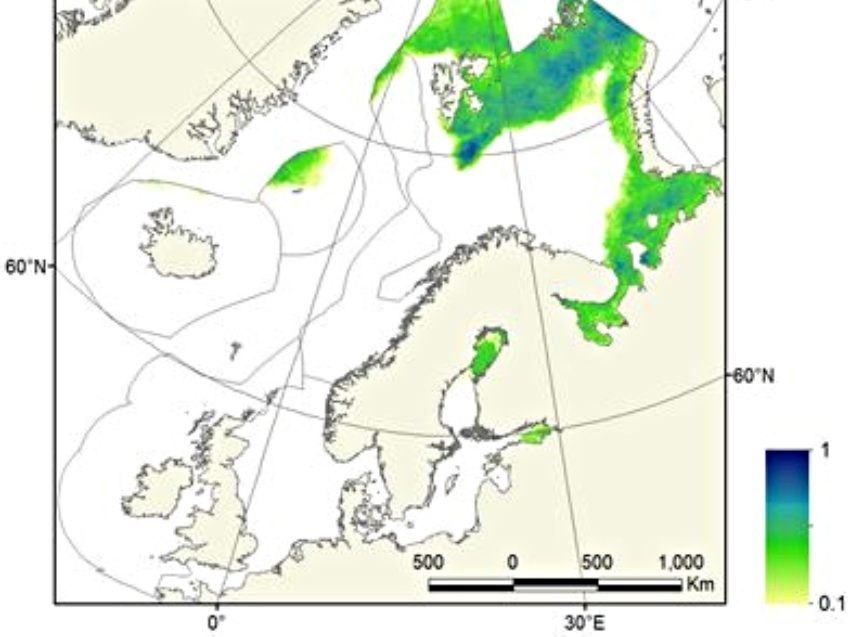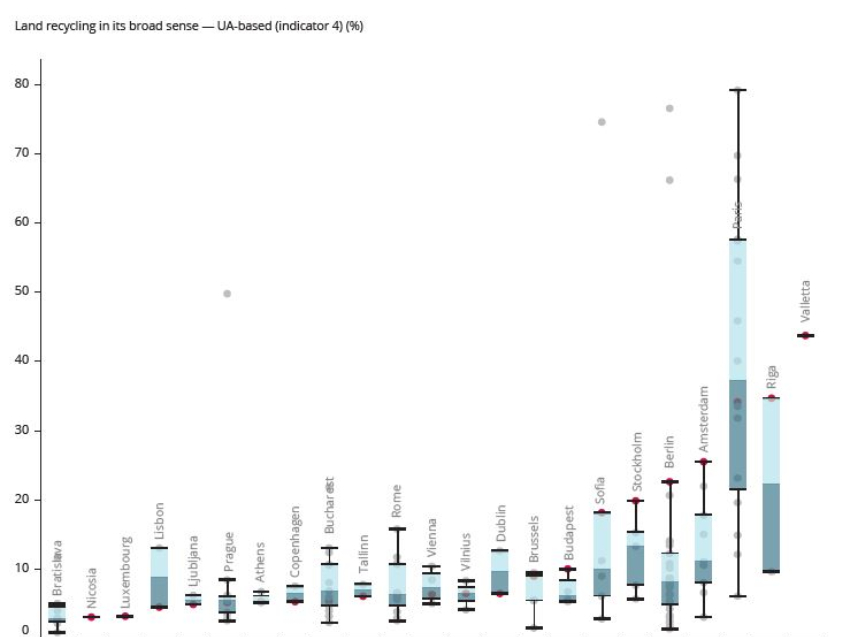Interfase-UAB has participated in the ESPON seminar focused on ‘Transforming Territorial Thinking Through Digitalisation”, representing two ongoing projects: ESPON 2020 Database Portal and ESPON GRETA. Continue reading “Interfase-UAB participates in the ESPON seminar ‘Transforming Territorial Thinking Through Digitalisation””
Category: Projects
All posts about Interfase projects
Report: Health and Quality of Life in Urban Areas
The second in a series of Synthesis Reports (SR) produced by FP7 URBAN-NEXUS project addresses the importance and urgency of integrating health and quality of life in urban areas. Continue reading “Report: Health and Quality of Life in Urban Areas”
Europe is losing seasonal sea ice faster than perennial
Walruses, belugas and narwhals are the most affected marine mammal species
According to the preliminary results of an ongoing research where Joan Parera and Raquel Ubach are developing a new indicator for monitoring sea ice extent, seasonal sea ice is declining faster than perennial. Continue reading “Europe is losing seasonal sea ice faster than perennial”
Land recycling in Europe
The EEA has recently published a report entitled “Land recycling in Europe“, which presents approaches to measuring the extent and impacts of redevelopment and densification of previously developed land. Continue reading “Land recycling in Europe”
NILS project – Research stage in the Arctic to study the vulnerability of whale species and whale hunting local communities
Brief Description:
This research stage has been completed by Dra. Françoise Breton from INTERFASE research group of Geography Department and ICTA institute of the Universitat Autònoma de Barcelona (UAB), in collaboration with Dr. Svein Jentoft and MARA research group from the University of Tromsø (UiT – The Arctic University of Norway). Continue reading “NILS project – Research stage in the Arctic to study the vulnerability of whale species and whale hunting local communities”
Pilot project in the Adriatic on testing the candidate common indicator ‘Land use change’ in the Mediterranean within the EcAp framework/EcAp-MED project
Brief Description:
In the overall framework of an EU funded project on the “Implementation of the Ecosystem Approach in the Mediterranean by the Contracting parties in the context of the Barcelona Convention for the Protection of the Marine Environment and the coastal region of the Mediterranean and its Protocols” (EcAp-MED project 2012-15), the Pilot project in the Adriatic aims, following up on the CORMON outcomes, to test the applicability of the land-use change candidate common indicator, though a sub-regional pilot.
New contract between EEA and ETC/ACM Consortium
The European Topic Centre on Air Pollution and Climate Change Mitigation (ETC/ACM) and the European Environment Agency (EEA) negotiated the third yearly contract to start in January 2016.
The SGR-Interfase team leads the tasks related to environmental noise in the ETC/ACM Consortium.
The main tasks to be accomplished in 2016 are focused on the management and quality check and quality control of the noise data delivered by the EEA Member States in compliance with the information required by the Environmental Noise Directive (END) and its publication in a new noise viewer that will be available at the end of the year.
The second main focus of the work being developed by the SGR-Interfase team is the assessment at European level of all the available information related to environmental noise, in order to evaluate the state-of-the-art at European level and assess potential improvements from the current situaion to the upcoming future. This part is mainly going to be achieved by the update of the yearly indicators on environmental noise at EEA level and the assessment reports developed every two years on this topic by the EEA, which includes other aspects such as noise management, noise action plans or health impact assessment due to noise exposure.
New topics that are going to be addressed in 2016 are focused on estimating the population living outside the areas covered by the END that could be potentially exposed to high levels of noise and also on methodologies to forecast noise exposure by 2020, 2030 or 2050.




